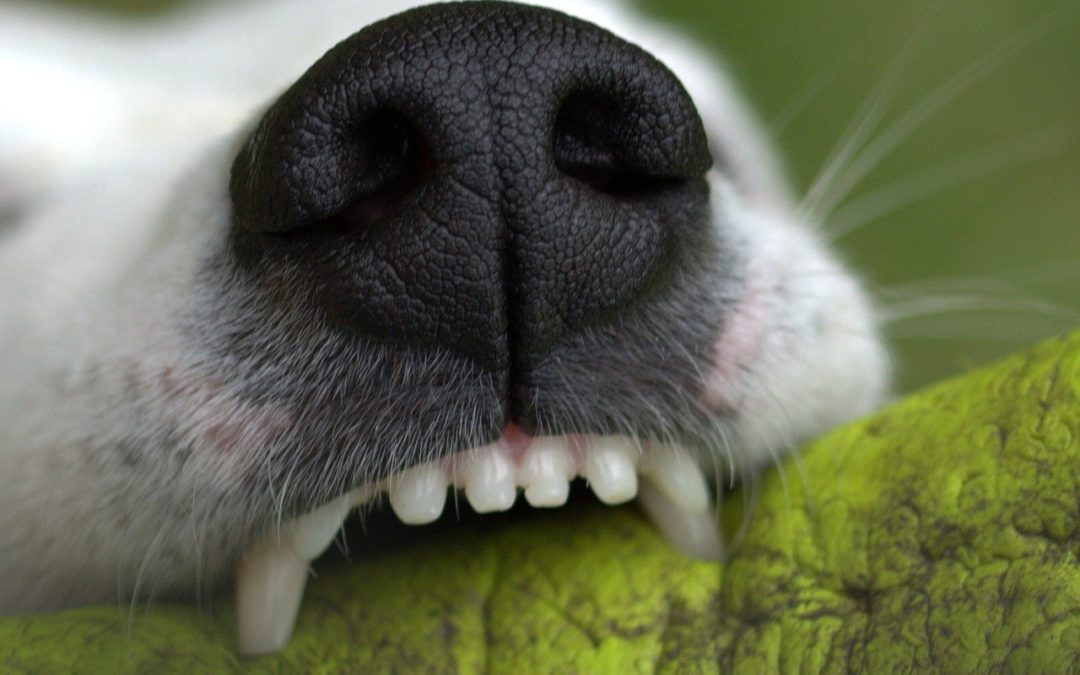Gum disease is one of the most common medical issues we see at East Valley Animal Hospital in Gilbert, AZ. Unfortunately, 80% of dogs will develop periodontal disease before the age of three. As pet owners ourselves, we know that It’s heartbreaking to see your dog unable to enjoy his favorite toy because of painful, inflamed gums. The good news is that gum disease is preventable and even reversible if caught early enough. In today’s post, we will talk about identifying, treating, and preventing periodontal disease in dogs.
Diagnosing Periodontal Disease in Dogs
Just as with a human, your dog’s dental health is a vital part of his overall health. Therefore, a problem in your dog’s gums is not limited to his mouth. Periodontal disease can cause a plethora of issues, including weight loss and heart problems. If your dog is exhibiting any of these signs, make an appointment with your vet right away:
- Halitosis. No dog’s breath smells like roses. But if your dog’s breath smells rancid and is getting worse, it may be time to consult a vet.
- Bleeding or red gums. Visible irritations in your dog’s mouth are a clear signal that something is wrong. Especially if your dog’s gums are bleeding or swollen, consult your vet immediately.
- Drooling. If your dog is drooling, it may be because her inflamed gums are causing excessive salivation. In any case, excessive drooling is never a good sign, so it should not be ignored.
- Teeth falling out. This is another symptom you shouldn’t take lightly. Your dog’s teeth falling out may indicate tooth decay, gum disease or something more serious. He’ll need a vet’s attention right away.
Periodontal Disease Treatment
Although periodontal disease is extremely common in dogs, the good news is it’s also very treatable. Vegetarians identify four stages of periodontal disease, with stage 1 being the least severe and stage 4 being the most severe. Your dog’s treatment plan will depend on what stage he falls under based on what symptoms he’s exhibiting.
- Cleanings. In a mild to moderate case (stage 1 or 2), gum disease may be reversed with just a thorough cleaning and polishing to remove plaque.
- Gingivectomy. More severe cases (stages 3 and 4) may warrant more extreme measures. A gingivectomy involves the removal of damaged gums.
- Subgingival curettage. Another procedure to heal your dog’s damaged gums, subgingival curettage removes the damaged tissue around the gums.
- Teeth removal. Our team considers tooth extraction surgery a “last resort,” but in advanced cases of periodontal disease, dogs may need to have teeth removed.
Any major procedure will require some time for your dog to adjust. Most of these surgeries involve anesthesia and will cause your dog to feel groggy for a day or two. The level of pain your dog experiences will depend on the procedure and the severity of his symptoms, but it should subside within a few days.
Periodontal Disease Prevention
Many precautions can be taken against the risk of gum disease, such as:
- Teeth brushing. This may take some getting used to for you and your dog, but brushing his teeth will get rid of bacteria and stop plaque from building up, just as with humans.
- Check-ups and teeth cleanings. At your dog’s annual check-up, your EVAH vet will examine his teeth and gums. Annual cleanings help to prevent the buildup of plaque overtime, which leads to gum disease.
- Feeding him the right food. For both your dog’s oral and overall health, choose wholesome brands that are approved by your veterinarian.
Your Local Vet in Gilbert
East Valley Animal Hospital is on your side when it comes to your dog’s health. Don’t let gum disease hold him back. With some at-home care and professional help from us, he’ll be back to his favorite chew toys in no time!
Images used under creative commons licence – commercial use (11/27/20). Photo by Meli1670 on Pixabay.

